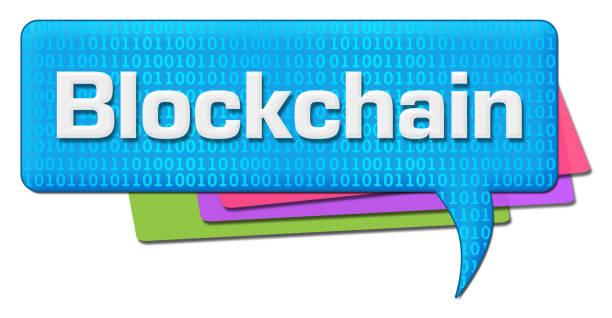How to choose the best lender
It's always best to get quotes from a few lenders before applying for a loan so you can determine which can give you the best offer. When comparing lenders, keep an eye on these factors.
- Approval requirements: Every lender has its own threshold for approving potential borrowers, considering things like your income, credit score and debt-to-income ratio. If you have below-average credit, look for lenders that utilize other approval criteria; some will take into account things like your area of study or job history.
- Interest rates: The lowest advertised rate is never guaranteed, so compare your actual quotes. When comparing interest rates, also make sure to incorporate any fees or penalties; origination fees or application fees can significantly add to the overall cost of your loan.
- Loan amounts: The scope of your home project or repair will determine how much you need to borrow. If you are remodeling your kitchen, you will likely need a larger loan than if you were just replacing an appliance.
- Repayment options: A good home improvement loan lender usually offers multiple repayment terms so you can choose the one that makes the most sense for your situation. If you're borrowing a lot of money, you may want to look for a lender with long repayment terms to decrease your monthly payment. If you have a smaller loan, a shorter repayment term will cut back on the amount of interest you pay overall.
- Unique features: Keep an eye out for lenders with any unique perks (or restrictions). Be sure to check that any lender you're considering will allow you to use your loan for the purpose you're intending.
- Customer service: It's also wise to investigate a company's customer service options, particularly if you prefer in-person service to online. If you need more information, you can always look up reviews about the company or check out its Better Business Bureau profile.
Compare home improvement loan rates in July 2023
| LENDER | BEST FOR | EST. APR | LOAN AMOUNT | LOAN TERM | MIN CREDIT SCORE |
|---|---|---|---|---|---|
| Achieve | Quick approval | 7.99%-35.99% | $5,000-$50,000 | 2-5 years | 640 |
| Best Egg | Consumers with limited credit history | 8.99%-35.99% | $2,000-$50,000 | 3-5 years | 600 |
| LendingClub | Emergency home repairs | 9.57%-36.00% | $1,000-$40,000 | 2-5 years | 660 |
| LightStream | Long-term financing | 7.99%-21.24%* (with AutoPay) | $5,000-$100,000 | 2-7 years | Not specified |
| Upgrade | Fast funding | 8.49%-35.99% | $1,000-$50,000 | 2-7 years | 600 |
| Upstart | Consumers with below-average credit | 4.60%-35.99% | $1,000-$50,000 | 3-5 years | No requirement |
| Prosper | Online-only experience | 6.99%-35.99% | $2,000-$50,000 | 2-5 years | 640 |
| Discover | Good credit and fast funding | 6.99%- 24.99% | $2,500-$35,000 | 3-7 years | 660 |
A closer look at our top home improvement loans
Here's a deep-dive into each lender, why its the best in each category and specifically who would benefit most from borrowing from the lender.
Achieve: Best for quick approval
Overview: Achieve is a digital personal finance company that offers personal loans, home equity loans and debt management resources and tools. Over the past 20 years, the lender has served over a million people, giving it a trusted reputation in the lending industry.
Best Egg: Best for consumers with little credit history
Overview: Best Egg is a well-known lender due to its ample benefits and unique member perks. Plus, those with fair credit may qualify, as the lender accepts applicants with a credit score over 600.
LendingClub: Best for emergency home repairs
Overview: Up until 2021, LendingClub operated as a peer-to-peer lender but has since transitioned to a traditional lender and bank. While it does charge higher minimum interest rates than most lenders, it does allow applicants to add a co-signer, which increases your odds of scoring a more competitive rate.
LightStream: Best for long-term financing
Overview: LightStream is an online lender that's a branch of the commercial bank, Truist. It caters to borrowers with good to excellent credit and touts a fast and easy online application process that can be completed through the website or on the mobile app.
Upgrade: Best for fast funding
Overview: In the past five years, Upgrade has made over $21 million in credit available to its customers. Headquartered in San Francisco, but with offices in Phoenix, Montreal and Atlanta, Upgrade offers multiple financial products and services, like credit cards, personal loans and savings accounts.
Upstart: Best for consumers with below-average credit
Overview: Upstart is an online lending marketplace that uses artificial intelligence (AI) to optimize its lending model and approval model rather than only using a borrower's FICO score.
Prosper: Best for an online-only experience
Overview: Prosper is a peer-to-peer lender that matches borrowers with investors, rather than matching borrowers with banks or financial institutions. Established in 2005, the company has established over one million customers, earning itself a trusted reputation in the lending industry.
Discover: Best for good credit and fast funding
Overview: Discover personal loans are affordable, offer flexible repayment terms, a low minimum APR and can be used for a variety of purposes — like a home improvement loan. Loan amounts go from $2,500 to $40,000 and borrowers have up to seven years to repay their loans.
What is a home improvement loan loan?
A home improvement loan is usually an unsecured personal loan used to pay for home repairs and remodeling projects. Home improvement loans can range from $1,000 to $100,000 and typically have a fixed interest rate and a fixed monthly payment.
When you're approved for a home improvement loan, you receive all funds up front, which you can then use for your project. As soon as funds are disbursed, you'll enter the repayment term, which can last anywhere from one to seven years. During this time, you'll make regular fixed payments on the loan, paying back the principal plus interest.
Types of home improvement loans and their uses
Pros and cons of home improvement loans
Pros:
- Most home improvement loans are unsecured, so you won’t lose your home if you default on your loan.
- You’re approved the same day or a few days after.
- Since home improvement loans come with fixed interest rates, you can enjoy predictable payments.
- They can boost your credit score by adding to your credit mix and payment history.
Cons:
- You may be on the hook for fees such as origination fees and late fees. This can increase the overall cost of your loan.
- Some home improvement loans have high APRs, which may cost you thousands of dollars in interest.
- If you borrow more than you can afford, you risk steering yourself into a cycle of debt.
Where to get home improvement loans
Just like other types of loans, home improvement loans can be obtained from multiple sources, like the following:
- Banks
- Credit unions
- Online lenders
- Peer-to-peer lenders
Of all these options, banks tend to have the most stringent requirements, but also offer the best interest rates. Peer-to-peer lenders, on the other hand, tend to be more lenient and evaluate other factors, such as your employment and education history. That said, peer-to-peer lenders offer higher rate caps compared to other lenders. This is because they’re taking on a higher risk by lending to those with little-to-no credit history or less-than-stellar credit.
How to apply for a home improvement loan
- Determine how much you need. Calculate how much money you need, and factor in any origination fees that may be deducted from your loan proceeds.
- Check your credit score. The higher your credit score, the better APR you'll receive. Consider a co-signer if you have fair or bad credit for more favorable rates.
- Get prequalified. This lets you check your rates with multiple lenders without hurting your credit score.
- Compare rates and loan terms. Look at a variety of lenders, including banks, credit unions and online lenders to see which offers you the best deal.
- Complete the application process. You’ll need to submit documents such as pay stubs, tax returns and a personal identification.
Alternatives to home improvement loans
If you’ve determined that a personal loan isn’t the best option for you, look into these alternatives instead.
Cash-out refinance
When you apply for a cash-out refinance loan, you’re replacing your mortgage for a new, larger one that allows you to tap into your equity. Although these loans typically come with lower interest rates, your house is used as collateral.
Cash-out refinances can also take up to 60 days to complete, which isn’t ideal in case of an emergency.
Credit cards
Credit cards are also another option you can explore. They can provide quick funding, a “spend-as-you-go” approach and can be repaid over the course of many months. However, credit cards have one of the highest interest rates in the market, with an average interest rate above 20 percent.
When choosing a credit card to pay for home repairs, try qualifying for a 0 percent introductory rate card. These will allow you to fund your purchase, while giving you some wiggle room to pay off your balance, without accruing interest for the first few months.
Government loans
Local government agencies, as well as the Department of Housing and Urban Development (HUD) also offer a variety of grants and loans to pay for home improvements. Although these are low-cost loans, getting one can be a tall order as they tend to have very strict requirements to qualify. Additionally, government loans are typically restricted to necessary renovations to make the property livable, not cosmetic improvements.
Cash from savings
If you have a nest egg big enough to pay for home repairs or renovations out of pocket, that’s probably the best way to go. You won’t have to worry about owing money to anyone, damaging your credit or incurring any interest or fees. That said, make sure to not go overboard and leave enough for a rainy day.




